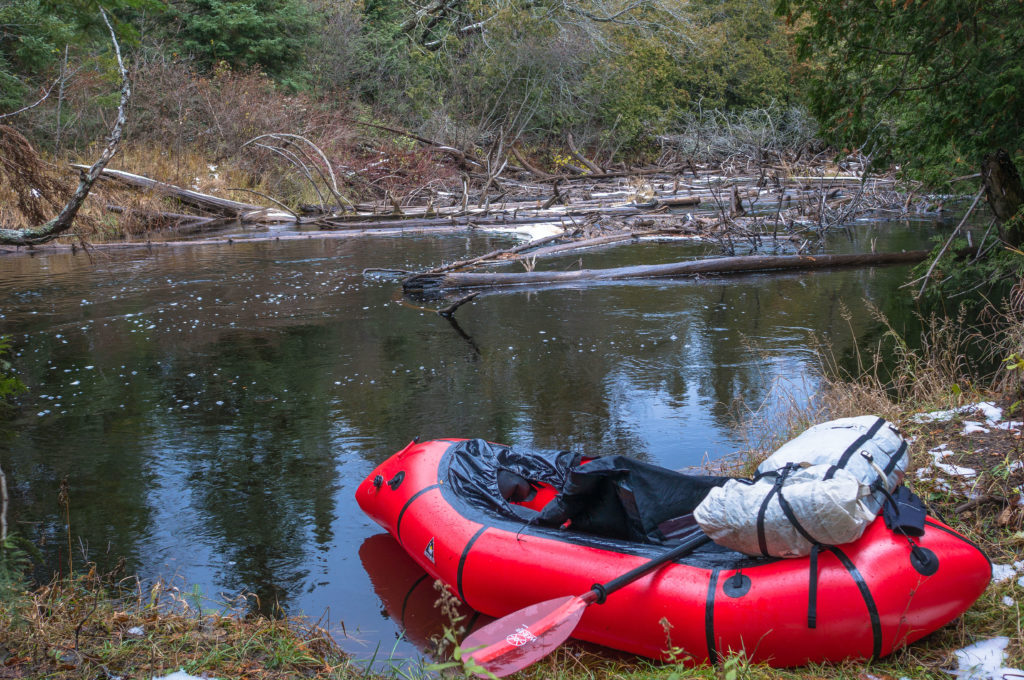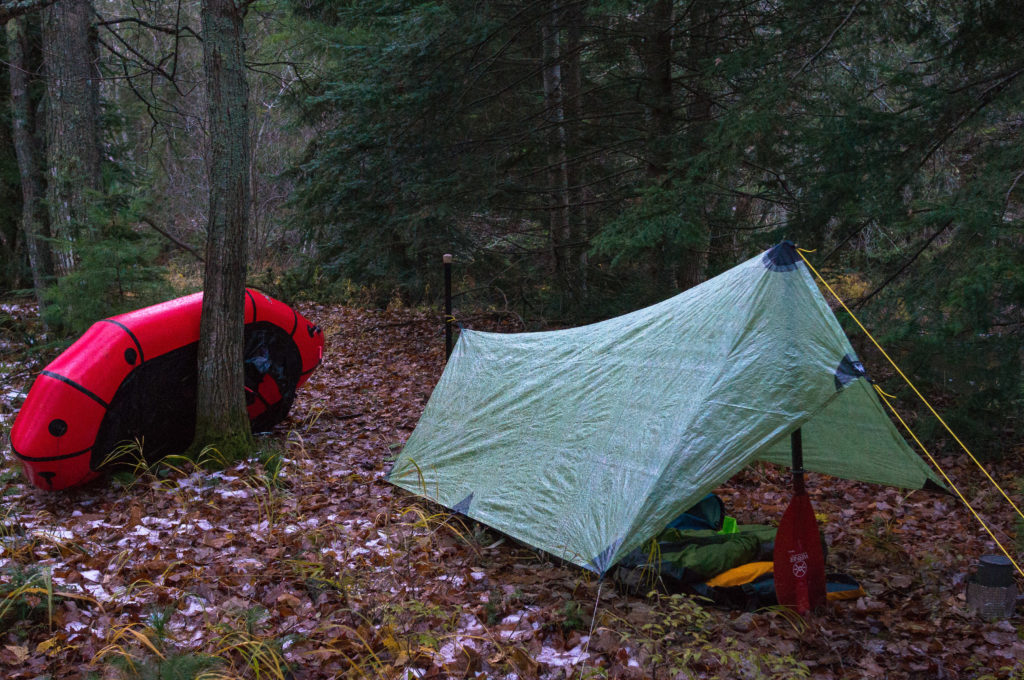It was a bad day to be out on the water without underwear. Winter had come early to northern Michigan, bringing sub-freezing temperatures, snow, and heavy wind. Somewhat inscrutably, I had decided that it might be fun to run the big Two-Hearted River in the upper peninsula of Michigan. Now, as the frigid water ran freely through places where it clearly didn’t belong, I wasn’t so sure.
Popularized by Ernest Hemingway in a story about the healing properties of nature, the Two-Hearted River flows swiftly through spruce and hemlock forest across the eastern UP and into Lake Superior. I came in search of its legendary trout, and its much-needed restorative powers.
The aforementioned underwear was tucked safely into a drybag at the bow of my raft along with a dry set of hiking clothes and assorted gear. I had yet to find a pair of paddling pants that would reliably keep my seat dry, so I usually just planned on doing without until I reached the safety of a warm camp where they would be more appreciated.
Since the big fire a few years ago that had burned down the only lodge in the area, the river was obviously not often paddled. One sweeper followed another, and I was in and out of the boat often.

Soon sweepers were replaced by log-jams. Portage was made difficult by the thick willows growing bankside. It would be easy to become frustrated by this sort of slow travel, but as with all new relationships, acceptance goes a long way here. You need to get to know the river for who she is, and not who you would want her to be.



I danced briefly with Medusa when I slid off a high bank while trying to re-enter my raft following a challenging portage. The shock of the cold water had me instantly porpoising back into the boat, but now it became a race to reach my planned take out before my legs turned to stone. Thoughts of fishing vaporized, and I paddled hard to keep warm, monitoring myself frequently.
People talk about avoidance of dampness as a winter priority, but this is not always realistic, particularly when water travel is involved. An equally useful skill is knowing just how cold you can get and still be fully functional, and what to do when you cross the line.

Tucked warmly into my bag, I scarfed down a bag of spicy angel hair pasta with chicken and broccoli and a hot drink before falling asleep. When I woke briefly at midnight, I was happy to be able to feel my toes again.
Predictably, it began sleeting later that night. The next morning, I walked out in the freezing rain, 27 miles along the North Country Trail back to my car. I left the camera safely tucked away in my pack, not in the mood to take dreary photos. This trip would be enjoyed more in the recollection then in the actual doing.
F** You, Ernest Hemingway
Post-Trip Comments: It is always hard to know what to do with these types of reports. Our failures rarely elicit the same sort of response as the trips that went really well, and my inclination is usually to just bury them and move on. In the end though, I decided to write it up as a reminder that not every adventure comes off as planned, and if you don’t have a stinker every now and again, maybe you’re not putting yourself out there enough. And as is often the case, a week later the memories are all good.
Originally published November 2013
